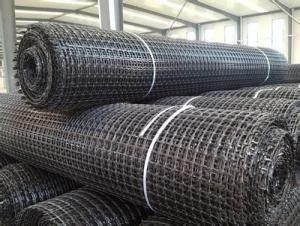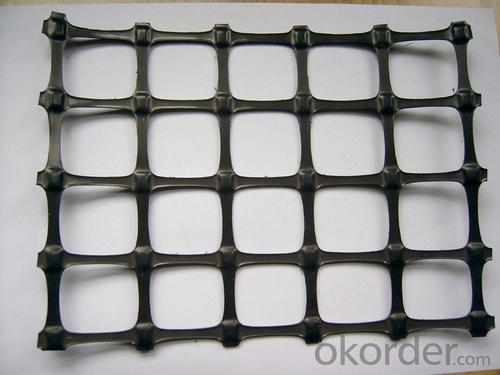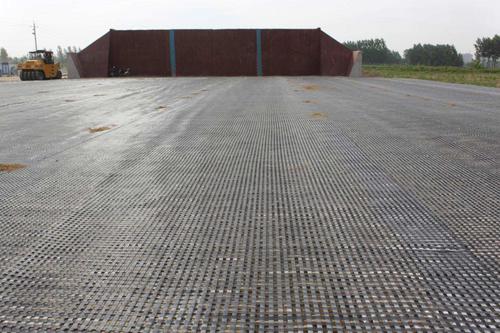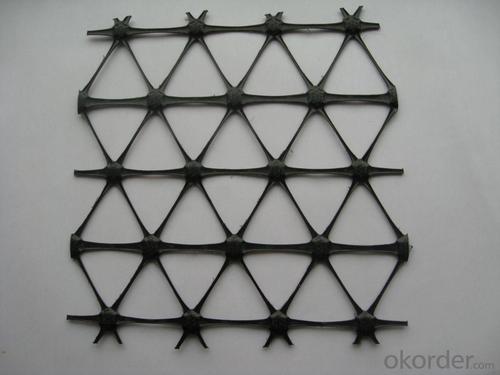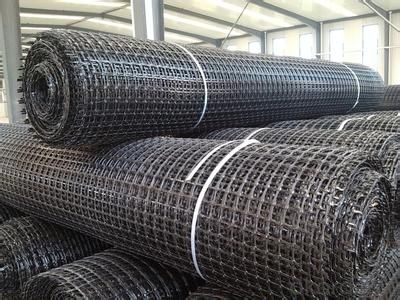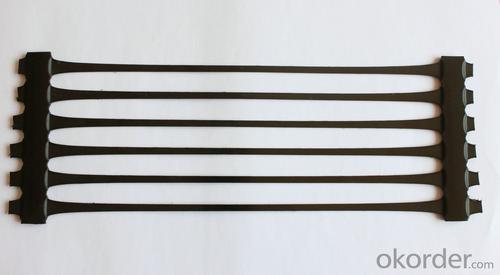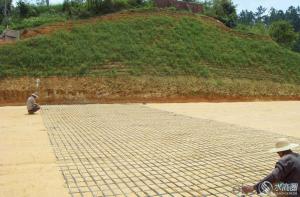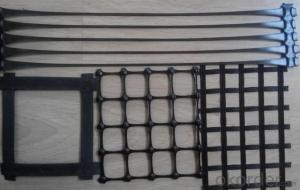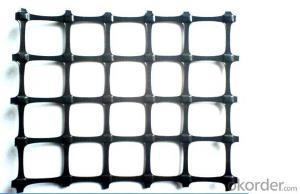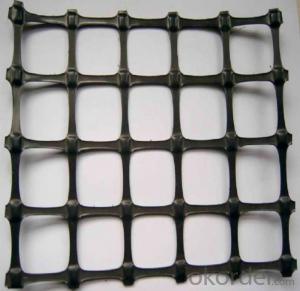Reinforcement Geogrids for Fiberglass Road Pavement
- Loading Port:
- Shanghai
- Payment Terms:
- TT or LC
- Min Order Qty:
- 50000 m²
- Supply Capability:
- 2000000 m²/month
OKorder Service Pledge
OKorder Financial Service
You Might Also Like
Fiberglass Geogrid for Road Pavement Reinforcement
Description Of Fiberglass Geogrid for Road Pavement Reinforcement:
Fiberglass geogrid is based on fiberglass woven cloth coated with modified bitumen or PVC, it was developed to address the problem of pavement cracking on highways, roads and runways, driven by a need to reduce cost for infrastructure maintenance and repair.
It is characterized by high tensile strength in axial and lateral directions, low stretch rate, alkali-resistance, low temperature- resistance, as well as convenience in construction and low price. It can be used on pitch pavement to prevent cracks and prolong pavement service life. It also can be used as a basal reinforcement material for hillsides, reservoirs, harbors, ports, water channels, seawalls, etc.
Main Features of Fiberglass Geogrid for Road Pavement Reinforcement:
1.High tensile strength, low elongation.
2.No long-term creep: the product can keep for a long time performance.
3.Thermal stability: fiber glass melting temperature above 1000 ℃.
4.The compatibility with asphalt.
5.Physical and chemical stability.
Specifications of Fiberglass Geogrid for Road Pavement Reinforcement:
Tensile Strength (KN) | Warp | >30 | >50 | >60 | >80 | >100 | >120 | >150 | >200 |
Weft | >30 | >50 | >60 | >80 | >100 | >120 | >150 | >120 | |
Elongation(%) | <4 | <4 | <4 | <4 | <4 | <4 | <4 | <4 | |
Mesh Size(mm) | 25.4*25.4 | 25.4*25.4 | 25.4*25.4 | 25.4*25.4 | 25.4*25.4 | 25.4*25.4 | 25.4*25.4 | 25.4*25.4 | |
Elastic Modulus | 76 | 76 | 76 | 76 | 76 | 76 | 76 | 76 | |
Width(m) | 1~6 | 1~6 | 1~6 | 1~6 | 1~6 | 1~6 | 1~6 | 1~6 | |
Length(m) | 50~300 | 50~300 | 50~300 | 50~300 | 50~300 | 50~300 | 50~300 | 50~300 | |
Temperature Resistant(℃) | -100~280 | -100~280 | -100~280 | -100~280 | -100~280 | -100~280 | -100~280 | -100~280 | |
Resin Content (%) | 18~20 | 18~20 | 18~20 | 18~20 | 18~20 | 18~20 | 18~20 | 18~20 | |
Glue Type | Bitumen PVC SBR soakage | Bitumen PVC SBR soakage | Bitumen PVC SBR soakage | Bitumen PVC SBR soakage | Bitumen PVC SBR soakage | Bitumen PVC SBR soakage | Bitumen PVC SBR soakage | Bitumen PVC SBR soakage | |
Applications of Fiberglass Geogrid for Road Pavement Reinforcement:
Strengthen bitumen concrete roadway and reduce and prevent various kinds of reflection gaps on roadway.
1.Suitable for highway, railway, airport road of subgrade enhancement.
2.Suitable for the large parking lot and port freight yard that the foundations of the permanent load increased.
3.Suitable for railway, highway slope protection.
4.Suitable for culverts.
5.Suitable for the uniaxial tensile geogrid reinforced soil secondary enhancement, after further enhance soil, prevent soil erosion.
6.Mining, tunnel reinforcement.
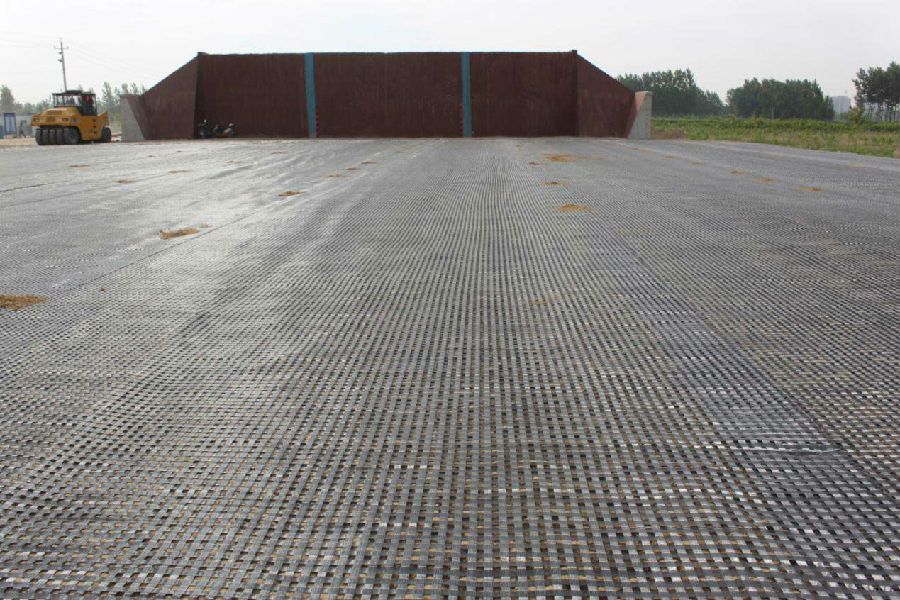
IMages of Fiberglass Geogrid for Road Pavement Reinforcement:
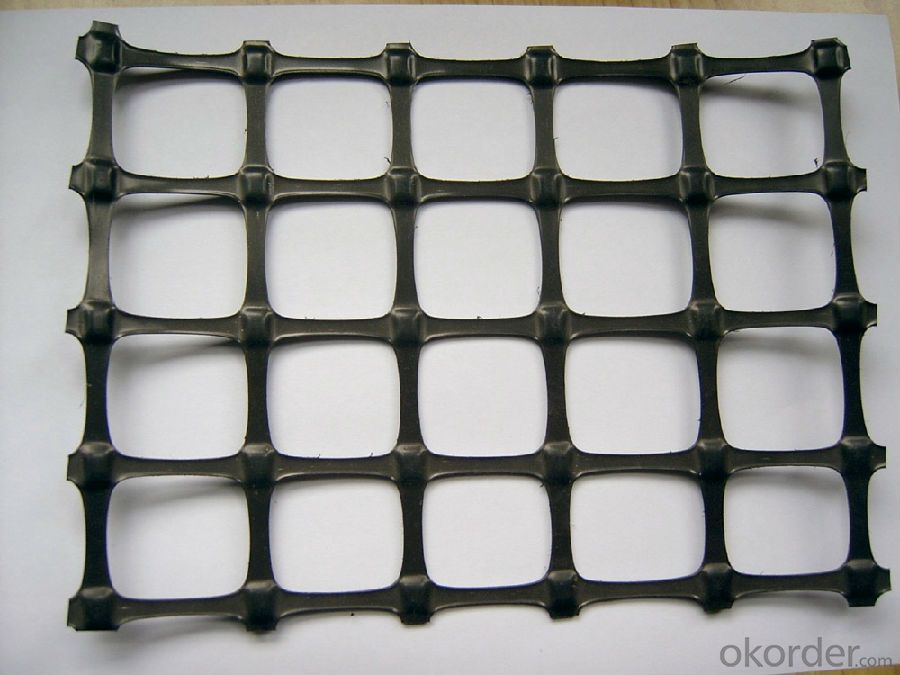
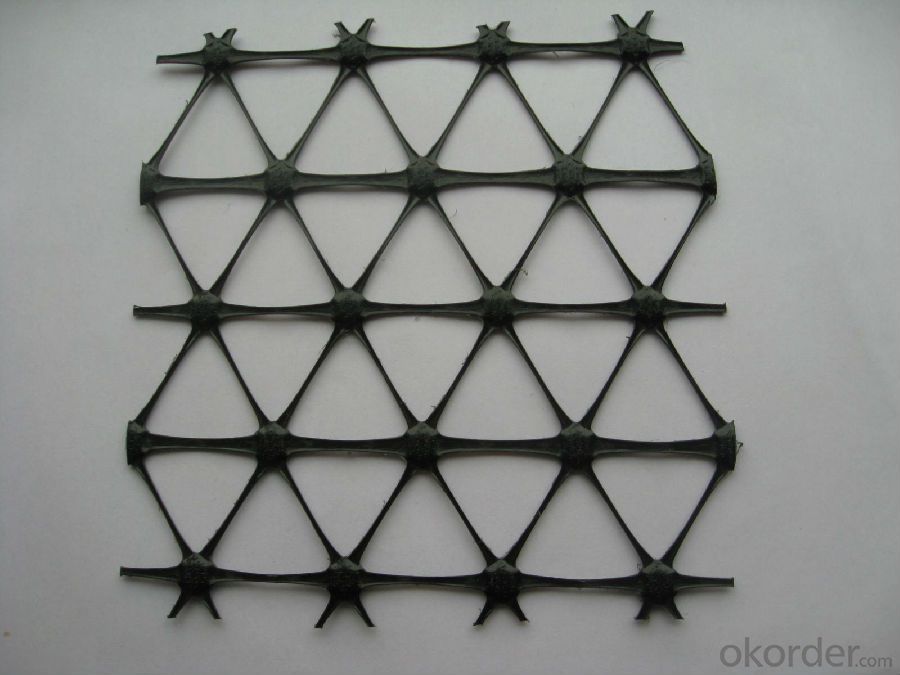

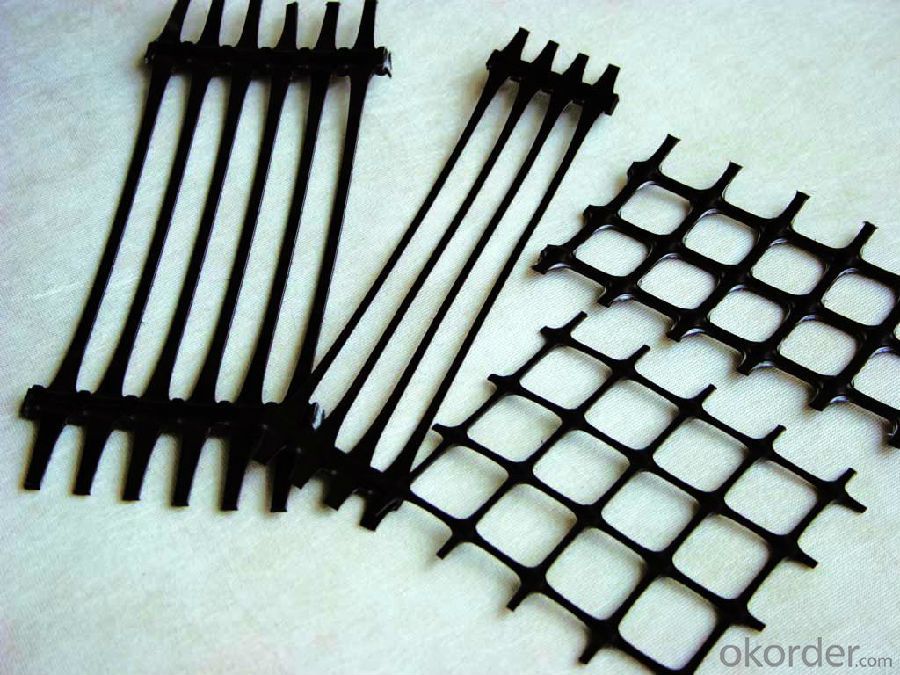
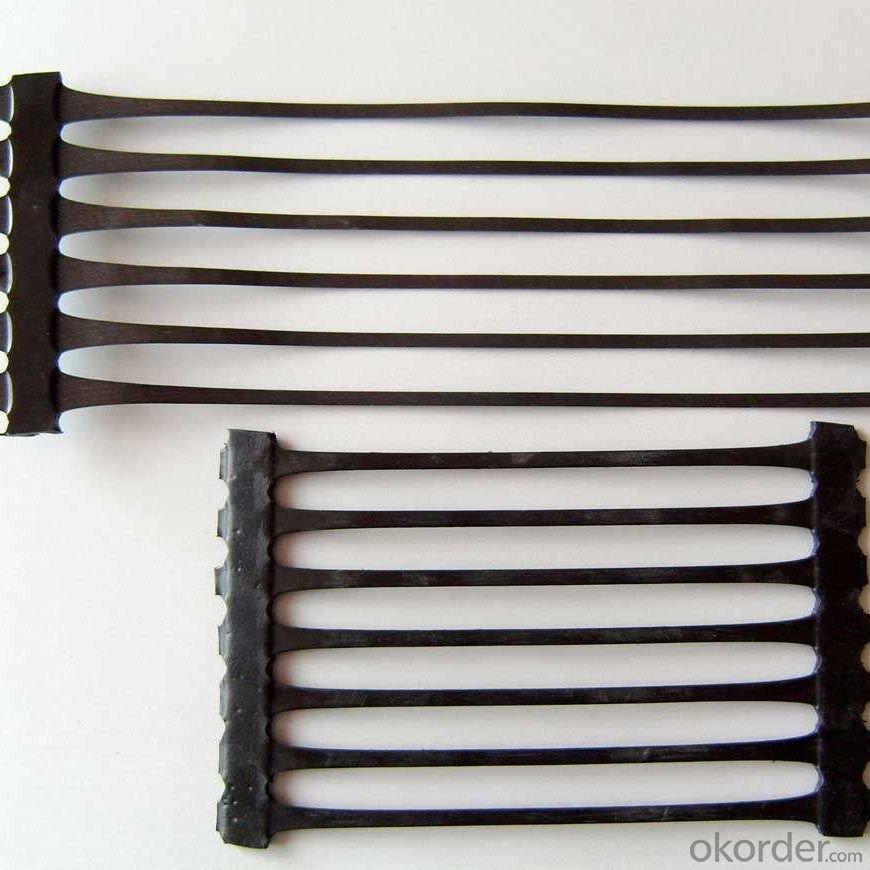
FAQ of Fiberglass Geogrid for Road Pavement Reinforcement:
1. What are we supplying?
We are specialized in producing Geosynthetic materials, like Geogrid Series, HDPE Geocell, Geonet, Geotextile, Geomat, Tri Denmensional Composite Grainage Geonet, and Geomembrane Series.
.
2. How Many years experience do we have?
We have been exported to more than 20 countries in the past 15 years.
3. How long do we usually reply your request?
We always reply our customer within 24 hours.
- Q: Are geogrids resistant to hydrostatic pressure?
- Yes, geogrids are generally resistant to hydrostatic pressure.
- Q: Can geogrids be used in pipeline construction?
- Yes, geogrids can be used in pipeline construction. Geogrids are commonly used as reinforcement materials to improve the stability and strength of soil, and they can be effectively employed in pipeline construction to provide additional support and prevent soil erosion, enhancing the overall durability and longevity of the pipeline.
- Q: What is the typical installation time for geogrids?
- The typical installation time for geogrids can vary depending on various factors such as the size and complexity of the project, the type of geogrid being used, and the experience and efficiency of the installation crew. However, in general, geogrid installation can typically take anywhere from a few hours to a few days.
- Q: How do geogrids help in pavement design?
- Geogrids help in pavement design by providing reinforcement and stabilization to the pavement layers, increasing their strength and durability. They distribute the load more evenly, reducing the potential for cracking and rutting. Geogrids also improve the overall performance of the pavement by enhancing its resistance to fatigue and reducing maintenance needs.
- Q: What is the tgsg15-15 geogrid
- The single belt is formed by the longitudinal and horizontal spacing or the clamping arrangement, and the welding joint is formed by adopting the welding technology of special strengthening bonding to weld the joint.
- Q: How to read geogrid grilleBe careful not to copy the dictionary. I want to know why he read it hereI look at the dictionary said: the gate of zhBlock made of bamboo, iron bars, etc.. barsIs it because geogrid can also be seen as a strip of things, so read Zha
- Normal should read Zha, but because of the dialect or engineering terminology habits, read Shan, habit, this is just a personal idea.
- Q: How do geogrids improve the performance of reinforced soil structures?
- Geogrids improve the performance of reinforced soil structures by providing additional tensile strength and stability. These materials enhance the load-bearing capacity of the soil, prevent movement and settlement, and distribute the applied loads more evenly. Geogrids also minimize the potential for soil erosion and improve the overall durability and longevity of the reinforced structure.
- Q: What is the effect of aging on geogrid properties?
- The effect of aging on geogrid properties can lead to a decrease in tensile strength and stiffness, as well as an increase in brittleness and susceptibility to environmental factors such as UV radiation and temperature fluctuations. This can result in reduced performance and durability of the geogrid over time.
- Q: Can geogrids be used in reinforcement of mechanically stabilized earth walls for bridge abutments?
- Yes, geogrids can indeed be used for reinforcement of mechanically stabilized earth walls for bridge abutments. Geogrids are commonly used in such applications as they provide additional tensile strength to the soil, improving its overall stability and preventing potential failure. By distributing and transferring loads, geogrids help increase the load-bearing capacity of the soil, making them an ideal choice for reinforcing mechanically stabilized earth walls used in bridge abutments.
- Q: Steel wire mesh is a kind of geotechnical material
- The total area of the grille rib, rib steel wire grid as much as possible is less than the opening area, in order to ensure the mechanical occlusion compared with the interlocking effect. That is to say, to make the mesh as much as possible to bite the soil area, in order to give full play to the role of occlusion. But the mesh size should not be too large, otherwise the stiffness of rib is small, but the bite force decreased. Three. The ribs and ribs of the grid should be perpendicular to each other so as to transfer the load more effectively. If both are not vertical...
Send your message to us
Reinforcement Geogrids for Fiberglass Road Pavement
- Loading Port:
- Shanghai
- Payment Terms:
- TT or LC
- Min Order Qty:
- 50000 m²
- Supply Capability:
- 2000000 m²/month
OKorder Service Pledge
OKorder Financial Service
Similar products
Hot products
Hot Searches
Related keywords




